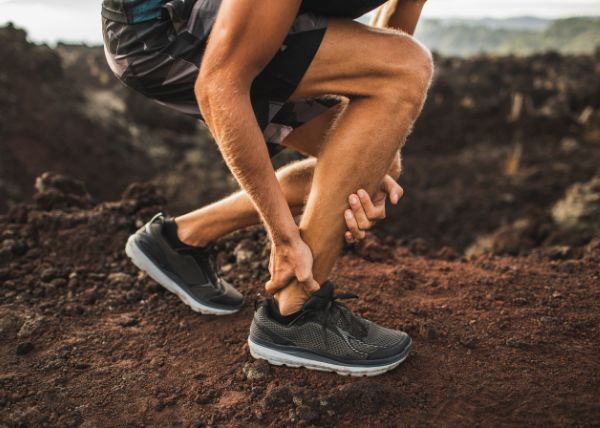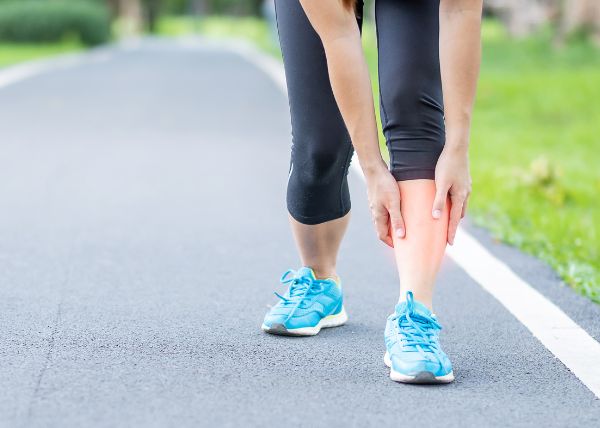Call Us Today
Menu

Do you feel intense pain in your shins when you exercise or even just walk? You may be suffering from shin splints, a common condition that causes pain and discomfort in the lower leg. While rest and ice can help alleviate the symptoms of shin splints, visiting a chiropractor may also provide relief. Chiropractic care is a great option for those looking to alleviate and treat their symptoms without medications or invasive procedures. At Sabet Chiropractic, our sports chiropractors are well-versed in treating shin splints and can help you get back on your feet pain-free.
Shin splints are often caused by overuse or repetitive stress on the shinbone and the tissues attaching it to surrounding muscles. This can lead to inflammation, pain, and discomfort in the lower leg. Chiropractic care focuses on restoring proper alignment and function to the musculoskeletal system, which can help alleviate the symptoms of shin splints and prevent future occurrences.
Shin splints, medically known as medial tibial stress syndrome, can be a painful and frustrating condition for athletes and individuals engaged in physical activities. Chiropractic care offers a holistic approach to managing shin splints, focusing on addressing the underlying causes and providing effective treatment options. Here's how we can help you.
Chiropractors begin by conducting a comprehensive assessment to determine the root cause of shin splints. This may involve examining the biomechanics of the lower extremities, assessing gait patterns, and identifying any contributing factors such as overpronation, muscle imbalances, or improper footwear.
Chiropractic adjustments play a crucial role in restoring proper alignment and function to the musculoskeletal system. Misalignments in the spine, pelvis, or lower extremities can contribute to abnormal biomechanics and increase the risk of developing shin splints. By gently realigning the affected joints and reducing tension in surrounding soft tissues, chiropractic adjustments help alleviate pain and improve mobility.
Chiropractors may utilize soft tissue techniques such as myofascial release, trigger point therapy, and instrument-assisted soft tissue mobilization to address muscle tightness, adhesions, and scar tissue formation in the lower leg muscles. These therapies help improve circulation, reduce inflammation, and enhance tissue flexibility, promoting faster healing and recovery.
Customized rehabilitation exercises are an essential component of chiropractic care for shin splints. Chiropractors prescribe specific strengthening and stretching exercises to target weakened or tight muscles, improve stability, and correct imbalances in the lower extremities. Common exercises may include calf stretches, ankle mobility drills, toe raises, and eccentric strengthening exercises for the calf muscles.
Chiropractors educate patients about the importance of proper footwear, adequate rest, gradual progression of physical activity, and cross-training to prevent the recurrence of shin splints. They also provide guidance on modifying training techniques, implementing proper warm-up and cool-down routines, and incorporating low-impact activities to reduce stress on the lower extremities.
By addressing the underlying biomechanical issues and implementing a comprehensive treatment plan tailored to the individual needs of each patient, chiropractors play a vital role in relieving pain, restoring function, and facilitating the recovery process for individuals suffering from shin splints. If you're experiencing persistent shin pain or discomfort, consider consulting with a chiropractor at Sabet Chiropractic for personalized care and effective management of shin splints.

The most common symptom of shin splints is pain along the inner edge of the shinbone (tibia), which may be sharp or dull and worsen with physical activity. Other symptoms include swelling, tenderness, and inflammation in the lower leg, especially during or after exercise. Some individuals may also experience aching, throbbing, or burning sensations in the affected area, as well as muscle tightness and stiffness. In severe cases, shin splints can lead to difficulty walking or bearing weight on the affected leg.
It's important to seek medical attention if you experience persistent or worsening symptoms of shin splints, as untreated shin splints can progress to more serious conditions such as stress fractures or compartment syndrome. A chiropractor specializing in sports injuries and musculoskeletal conditions can provide a comprehensive evaluation, accurate diagnosis, and effective treatment plan to address the underlying causes of shin splints and promote optimal recovery. Take back a pain-free life and book an appointment with us today.
At Sabet Chiropractic, we specialize in providing personalized care for individuals suffering from shin splints. Our experienced chiropractors are dedicated to helping patients achieve optimal health and wellness through a personalized approach to treatment.
When you visit Sabet Chiropractic for your shin splint concerns, you can expect a thorough evaluation of your condition. Based on our findings, we will develop an individualized treatment plan that may include chiropractic adjustments, soft tissue therapy, rehabilitation exercises, lifestyle modifications, and injury prevention strategies.
Don't let shin splints prevent you from enjoying your favorite activities or living life to the fullest. Trust the expertise of our chiropractors at Sabet Chiropractic and call (951) 929-2225 to schedule an appointment.
Yes, chiropractic care can be beneficial for managing shin splints. Chiropractors employ various techniques such as adjustments, soft tissue therapy, rehabilitation exercises, and biomechanical assessments to address the underlying causes of shin splints and promote healing.
The number of chiropractic sessions required depends on the severity of your shin splints, your response to treatment, and your overall health status. Your chiropractor will create a personalized treatment plan tailored to your specific needs and may recommend a series of sessions to achieve optimal results.
Chiropractic treatment for shin splints is generally not painful. Chiropractors use gentle techniques to manipulate the spine and joints, alleviate muscle tension, and promote healing. You may experience mild discomfort during certain adjustments or soft tissue therapy, but this is usually temporary and dissipates quickly.
The timeline for improvement varies depending on individual factors such as the severity of your shin splints, your adherence to treatment recommendations, and your body's response to therapy. Some patients experience relief from symptoms after just a few sessions, while others may require more time for significant improvement.
Chiropractic care can help address imbalances, muscle weaknesses, and other contributing factors that increase the risk of shin splints. By incorporating rehabilitation exercises, lifestyle modifications, and injury prevention strategies, chiropractors aim to minimize the likelihood of shin splints recurrence and promote long-term musculoskeletal health.
Yes, chiropractic care is generally safe and non-invasive for treating shin splints. Chiropractors undergo extensive training and education to ensure the safety and effectiveness of their treatments. They use gentle techniques and tailor their approach to meet the unique needs and preferences of each patient.
Your chiropractor will provide guidance on modifying your physical activity levels based on the severity of your shin splints and your treatment plan. In some cases, temporary modifications to your exercise routine may be recommended to allow for proper healing and recovery. However, your chiropractor will encourage you to stay active and may suggest alternative low-impact activities to maintain fitness levels during treatment.
Yes, chiropractic care can address a wide range of foot and leg pain conditions, including plantar fasciitis, Achilles tendonitis, ankle sprains, and knee injuries. Chiropractors use a holistic approach to assess and treat musculoskeletal issues, aiming to restore optimal function and alleviate pain in the lower extremities.
Mon/Wed/Fri: 9:00am - 5:00pm
Mon:
Wed:
Fri:
9:00am - 5:00pm
9:00am - 5:00pm
9:00am - 5:00pm
Tues/Thurs/Sat: 9:00am - 5:00pm
Tues:
Thurs:
Sat:
9:00am - 5:00pm
9:00am - 5:00pm
9:00am - 5:00pm